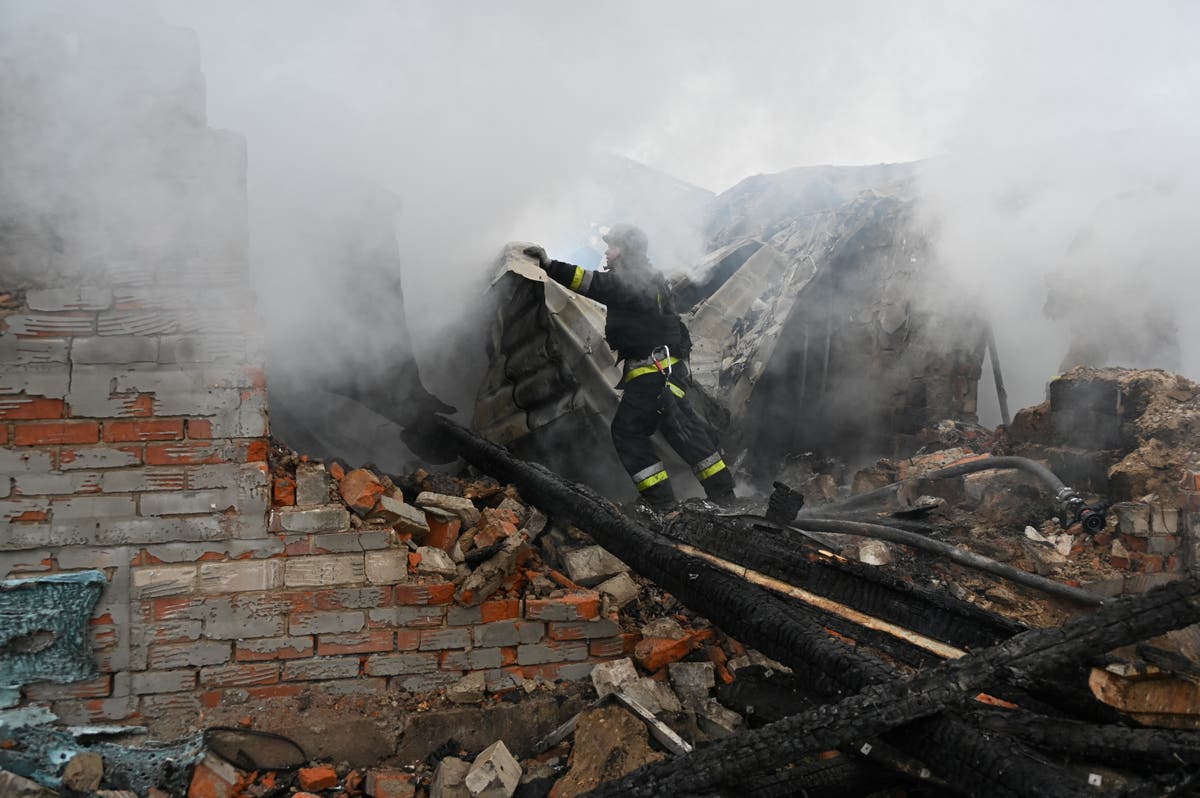World
As Europe Marks D-Day, Here’s How India’s Helped Allied Forces Win Second World War – News18

(Top left and right) Indian soldier Kamal Ram receives a medal of honour for his exploits in Italy. A still from the cinema ‘Saving Private Ryan’ shows Tom Hanks’ character using a ‘Bangalore Torpedo’. (Image: Victoria Cross Online/Veterans’ Foundation/YouTube)
India’s contribution to the Allied victory that ended World War II is yet to get its due recognition.
As Europe marks D-Day to pay homage to the US and other Allied soldiers who fought on the Normandy beaches in June 1944 and helped expel German forces from France and end World War II, the world often forgets the bloody battles that were fought in the Indian subcontinent during the second World War.
India was one of the key players in the second World War but it took many decades for the UK and the wider world to acknowledge that the battles fought here and the contributions of Indian soldiers who went to Europe to fight for the Allied forces were significant.
Among the military standoffs between allied and axis powers, the battles of Kohima and Imphal stand out. Indian soldiers were crucial for allied victory in these battles that were fought between March and July 1944 in what was then known as the North-East Frontier Tracts (NEFT).
The Japanese Fifteenth Army and the British Fourteenth Army fought against each other with Imphal-based 4 Corps fighting for the allied forces. Japan was heavily defeated in the battles and in 2013 the British National Army Museum voted it as one of Britain’s greatest battles.
Japan was seeking to capture Imphal to create an easy access between India and Burma (present day Myanmar) and interrupt air supplies to China. It also wanted to build a base to conduct aerial attacks against India. It wanted to capture the supply bases on the plains of Imphal and cut the road linking Dimapur in Nagaland.
The Japanese 15th Army, consisting of 85,000 troops, suffered significant losses during their campaign, with 53,000 soldiers either killed or missing. These losses were due to a combination of battlefield casualties as well as diseases and some died in the retreat back to Burma.
British forces recorded 12,500 casualties in Imphal and an additional 4,000 in the battle for Kohima, according to the National Army Museum’s website.
For around four months, over 200,000 men engaged in fierce combat across the challenging hilly terrain and valleys of Manipur and Nagaland. This confrontation is regarded as one of the most extraordinary battles of the Second World War.
The Bangalore Torpedo and D-Day
A report by the Deccan Herald highlighted how the simple yet effective Bangalore Torpedo played a crucial role during the D-Day operations.
This path-clearing device, consisting of metal pipes filled with explosives, could be linked together in multiple sections to safely navigate minefields and destroy barbed-wire obstacles.
Each section of the “Bangalore” was several feet long and weighed about 13 pounds. It was designed by Captain R.L. McClintock of the Madras Sappers, also known as the Madras Engineering Group, in 1912, shortly after the First World War. Its compactness and effectiveness have ensured its continued use in warfare worldwide to this day.
In popular culture, the Bangalore Torpedo has been prominently featured in D-Day-themed war films such as Saving Private Ryan, where Tom Hanks’ character uses it in the intense Omaha Beach scene.
Sepoy Kamal Ram: A Young Hero of Monte Cassino
In the lead-up to D-Day, numerous battles took place in Western Europe. One notable battle was fought at Monte Cassino along the Gustav Line, a series of German fortifications in southern Italy. This battle in May 1944 highlighted the bravery of a 19-year-old soldier.
Sepoy Kamal Ram, part of the 8th Punjab Regiment of the British Indian Army, volunteered to tackle German machine gun posts that his company encountered after crossing the Gari River, south of Monte Cassino hill. With just his rifle and bayonet, Kamal Ram overcame the entire German position. He killed several German soldiers and forced the others to surrender.
For his courageous actions, Kamal Ram became the youngest Indian to receive the Victoria Cross, the highest military decoration in the British Empire. King George VI awarded him the VC ribbon in July 1944 in Italy.










